Your Trusted Wholesale And Custom Linen Fabric Manufacturer
Sustainable Strength – Custom Linen Fabric by SzoneierFabrics
As a trusted linen fabric manufacturer, SzoneierFabrics combines natural elegance with modern performance. Sourced from premium flax fibers, our linen fabrics are breathable, moisture-wicking, and eco-friendly—ideal for fashion, home textiles, and sustainable apparel.
Your Design, Enhanced by Nature’s Fiber:
Tailored Textures – Choose from crisp, stonewashed, or softened finishes.Dye & Print Precision – Vibrant colors or subtle tones, achieved through low-impact dyeing.Functional Upgrades – Add wrinkle-resistant or antimicrobial treatments for added durability.
Linen Reimagined. Crafted for Your Vision.
Start your project with free linen samples—where tradition meets innovation.
You just choose wholesale any Linen fabric types for your customization, and we will take care of the rest.
Selecting the perfect fabric for your product line has never been easier! As a top rated fabric manufacturer, we offer a wide variety of wholesale Cotton fabrics that can be customized to suit your exact needs. Whether you’re looking for lightweight cotton for clothing, durable options for bags, or specialized fabrics with water-resistant or UV-protective coatings, we’ve got you covered. With endless options in colors, textures, and finishes, our fabrics are perfect for fashion, home textiles, outdoor gear, and more. Partner with us to bring your ideas to life with high-quality materials, competitive prices, and flexible customization options.

100 Linen Fabric

Breathable Linen Look Slub Bamboo Crepe Fabric

Cotton Linen Double Gauze Muslin Fabric

Cotton Linen Fabric

Crinkle Crepe Polyester Poly Linen Fabric

Embroidered Linen Fabric

Faux Linen Fabric

Floral Breathable Silk Linen Fabric

Jute Linen Fabric

Linen Custom Digital Printed Fabric

Linen Fabric PFD Textured Suit Fabric

Organic Pu Hemp Linen Fabric

Plaid Cotton and Linen Fabrics

Plain Linen Fabric

Plain Twill Linen Fabric

Plain Twill Linen Organic

Polyester Linen Sheer Fabric

Pure Cotton Linen Clothing Fabric

Pure Linen Fabric

Rayon Linen Blend Rayon Fabric

Sheer Linen Plain Woven Fabric

Silk Linen Fabric

Silk Linen Satin Fabric
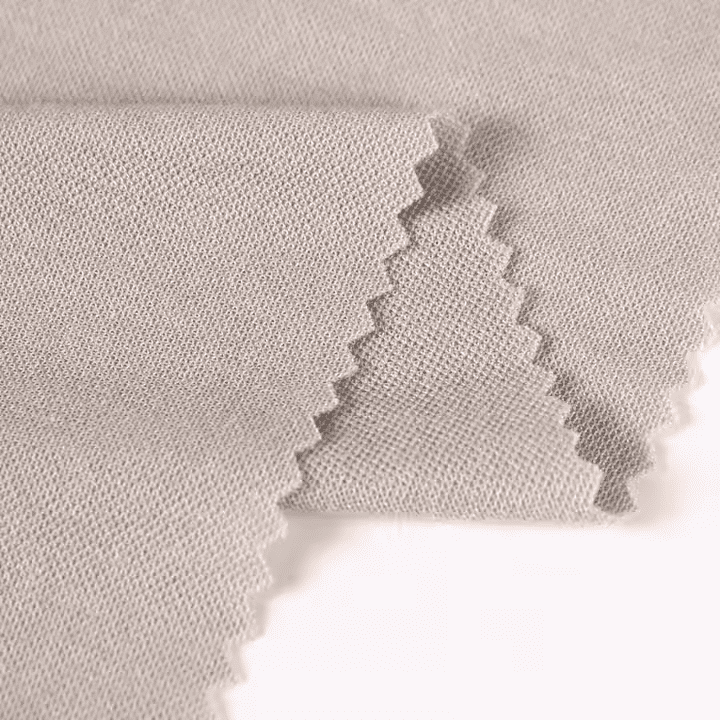
Stretch Silver Linen Fabric

Stripe Linen Fabric

Tencel Lyocell Linen Blended Fabric

Unbleached Striped Linen Flax Fabric

Vintage Flax Linen Fabric
Wholesale and Custom Fabric Categories
Versatile & Timeless – Discover the Endless Possibilities of Premium Linen Fabric
Potential applications of Linen Fabric










Fashion & Apparel
1、Luxury Clothing – Dresses, suits, blazers (elegant drape & timeless appeal) 2、Casual & Summer Wear – Shirts, pants, skirts (lightweight & cooling) 3、Sustainable Accessories – Scarves, hats, tote bags (natural aesthetic)

Home & Interior Textiles
1、Bedding – Sheets, duvet covers (temperature-regulating for better sleep) 2、Table Linens – Napkins, tablecloths (durable & stain-resistant) 3、Curtains & Upholstery – Adds rustic charm to modern interiors

Eco-Friendly Products
1、Reusable Bags & Packaging – Biodegradable alternative to synthetic materials 2、Organic Baby Products – Swaddles, blankets (hypoallergenic & gentle)

Industrial & Specialized Uses
1、Medical Textiles – Bandages, gowns (antibacterial & breathable) 2、Artist Canvases – Premium surface for painting & calligraphy
Why Partner With Your Trusted Nylon Fabric Manufacturer For Your Bespoke Products Needs?
When it comes to creating durable, versatile, and stylish products, nylon fabric remains a top choice. As a manufacturer with years of expertise in nylon fabric production, we offer both wholesale options and fully customizable solutions tailored to meet your unique requirements. Szoneier factory is equipped with state of the art machinery, allowing us to produce nylon fabrics in a wide range of textures, weights, and colors to suit various applications,from apparel to accessories and home textiles.
Partnering with us ensures that you benefit from high-quality materials, competitive pricing, and flexible production capabilities. We pride ourselves on strict quality control measures, ensuring each batch meets industry standards and your expectations. Whether you’re looking for eco-friendly recycled nylon or specialized finishes such as water resistance or UV protection, we’ve got you covered. Let us bring your vision to life, offering custom dyeing, printing, and finishing options to create the perfect fabric for your products.
Choose us as your trusted nylon fabric manufacturer and enjoy a seamless, reliable partnership for all your bespoke fabric needs!
Fabric Dyeing And Finishing Process
The fabric dyeing and finishing process is a crucial phase in textile manufacturing, transforming raw materials into vibrant, functional textiles. This process not only enhances the aesthetic appeal of the fabric but also improves its durability and usability
Dyeing
Dyeing is the process of adding color to fabric. Different dyeing techniques can be used depending on the type of fabric and the desired outcome: Fiber Dyeing: Color is applied directly to the fibers before they are spun into yarn. This method is often used for wool and silk and allows for rich, deep colors. Yarn Dyeing: The yarn is dyed before weaving into fabric. This technique is ideal for patterns like stripes or plaids and is commonly used for cotton fabrics. Piece Dyeing: In this method, the fabric is dyed after it has been woven. It is the most common method used for bulk production of colored fabrics. Batch Dyeing: Fabric is dyed in large batches, ensuring consistency in color across large quantities.
Printing
Printing adds intricate designs to fabric using various methods. The most common printing techniques include: Screen Printing: A stencil is created for each color, and dye is pushed through a mesh screen onto the fabric. This method is ideal for bold, vivid designs and is widely used for T-shirts and home textiles. Digital Printing: This modern technique uses inkjet technology to print designs directly onto fabric. It allows for high detail and quick turnaround times, making it perfect for custom designs. Rotary Screen Printing: Similar to screen printing but uses a cylindrical screen for continuous printing, making it efficient for large runs.
Coating
Coating involves applying a layer of material to the fabric to enhance its properties. This can include: Waterproofing: Fabrics are coated with a water-repellent finish to protect against moisture. This is commonly used for outdoor gear and clothing. Flame Resistance: Fabrics can be coated with fire-retardant chemicals to meet safety standards for specific applications, such as upholstery and workwear. Stain Resistance: A coating can be applied to fabrics to prevent stains from setting in, making them easier to clean and maintain.
Color Weaving
Color weaving involves incorporating colored yarns into the fabric during the weaving process. This method allows for intricate patterns and designs, such as:Jacquard Weaving: Developed in the 19th century, this advanced technique employs computerized looms to independently control thousands of warp threads, enabling photorealistic imagery and elaborate motifs. Modern applications range from luxury tapestries to technical textiles with embedded smart patterns, particularly valued in high-end upholstery and narrative-driven fabric art. Twill Weave: Characterized by its signature diagonal ribbing, this method interlaces colored weft threads in staggered sequences that enhance structural integrity. The angled texture not only camouflages stains but also improves abrasion resistance, making it ideal for durable workwear, designer denim, and performance-oriented home textiles like decorative pillow covers.
Fabric Structure Types
If you need help choosing the right fabric structure for your project, feel free to reach out to our expert team for guidance!
1.Plain Weave Linen: The most common weaving method, with uniform texture, suitable for clothing and home textiles. 2.Twill Linen: The weave is at an angle, softer to the touch, and more durable, often used in curtains and high-end clothing. 3.Jacquard Linen: With complex patterns or designs, suitable for high-end tablecloths, curtains and other decorations.
Classification by weaving method
1.Apparel Linen: Good breathability, suitable for summer shirts, skirts, suits, etc. 2.Home Textile Linen: Including sheets, curtains, tablecloths, etc., emphasizing comfort and durability. 3.Decorative Linen: Used for wall coverings, pillows, etc., often combined with jacquard technology. 4.Industrial Linen: Thickened and reinforced, suitable for canvas, packaging cloth, etc.
Classification by use
1.Natural Linen: Not bleached or dyed, retaining the original natural color. 2.Bleached Linen: Bleached to give it a bright hue, suitable for dyeing or printing. 3.Yarn-Dyed Linen: Yarn is dyed before weaving, with higher color fastness and richer patterns.
Classification by processing method
Fabric Weaving Process
01
Single-Sided Fabrics
Single-sided fabrics are produced using a straight forward weaving technique where the design and texture are visible on only one side of the fabric. The reverse side often has a plain, untextured appearance. This type of fabric is commonly used in garments, linings, and home textiles, where only one side is intended to be seen. The benefits of single-sided fabrics include simplicity in design and cost-effectiveness in production. Examples include satin, which features a glossy surface on one side, and muslin, known for its lightweight and breathable qualities.
02
Knitted Fabrics
Knitted fabrics are created by interlocking loops of yarn, resulting in a flexible and stretchy material. This process allows for a variety of textures and patterns, making knitted fabrics popular in apparel, activewear, and home textiles. Knitting can be performed using different techniques, such as warp knitting and weft knitting. Warp knitting involves yarns running parallel to the fabric’s length, providing greater stability, while weft knitting has yarns woven horizontally, offering more stretch. The unique properties of knitted fabrics, such as breathability and comfort, make them ideal for casual wear and sportswear.
03
Double-Sided Fabrics
Double-sided fabrics, also known as reversible fabrics, are woven to have distinct designs or textures on both sides. This type of fabric is produced by interlacing two layers of yarn, creating a thicker and more substantial textile. Double-sided fabrics are highly versatile and can be used in a variety of applications, from fashion to upholstery. The ability to use either side of the fabric adds value and functionality, allowing designers to create reversible garments and accessories. Common examples include double-faced wool, often used in coats, and plush velvet, popular in home furnishings.
04
Weft Knitting
Weft knitting is a specific type of knitting technique where the yarn is fed horizontally across the fabric. This process creates a series of interlocking loops, resulting in a stretchy and comfortable fabric. Weft knitted fabrics are widely used in garments such as T-shirts, sweaters, and leggings due to their excellent elasticity and ability to conform to the body. Additionally, weft knitting allows for a wide range of stitch patterns, offering designers creative flexibility in their projects. The softness and drape of weft knitted fabrics make them a favorite choice in casual and activewear.
Fabric Character
Linen is a naturally breathable and moisture-wicking fabric, keeping you cool and dry in warm weather. Its durability surpasses cotton, softening over time without losing strength. With antibacterial and hypoallergenic properties, it’s ideal for sensitive skin. Linen is also eco-friendly, requiring minimal chemicals and being fully biodegradable. Additionally, it regulates temperature, providing comfort year-round. Whether for clothing, home textiles, or accessories, linen offers a perfect blend of elegance, sustainability, and functionality, making it a timeless choice for conscious consumers.
Breathability & Moisture Absorption
- Flax fiber has excellent breathability and can effectively wick away sweat, keeping the skin dry.
- It has strong moisture absorption capacity and can absorb about 20% of its own weight in moisture without causing stuffiness.
Durability & Strength
Flax fiber is tougher than cotton fiber, has strong stretch resistance, and is not easy to deform or tear.
After repeated washing, linen will become softer and less prone to damage.
Antibacterial & HypoallergenicIt has natural antibacterial properties, which helps reduce bacterial growth and is suitable for sensitive skin.
It is anti-mite and anti-mildew, not easy to generate static electricity, and is skin-friendly, especially suitable for infants and people with allergies.
Eco-Friendly & Sustainable
- No large amounts of pesticides or chemicals are required in the production process, which meets environmental standards.
- It is biodegradable and reduces environmental pollution, making it an ideal choice for sustainable fashion.
Temperature Regulation
- It is breathable and cool in summer and can provide a certain warmth in winter, suitable for all seasons.
- It is suitable for all climates and makes wearing more comfortable.

Fabric Printing Styles
Fabric printing is an essential aspect of textile design, allowing for the creation of unique patterns and vibrant colors that enhance the aesthetic appeal of fabrics. Various printing styles cater to different tastes and applications, providing endless possibilities for customization. Let’s explore some of the most popular fabric printing styles:
1. Intricate Printing
2. Black and White Printing
3. Botanical Prints
4. Geometric Prints
5. Knitted Jacquard
6. Abstract Prints
Fabric GSM
Linen fabric weight (GSM) determines its texture and application. Lightweight linen (80-150 GSM) is soft and breathable, ideal for summer clothing and sheer curtains. Mid-weight linen (150-250 GSM) balances comfort and durability, perfect for apparel and home textiles. Heavyweight linen (250-400 GSM) offers structure and resilience, suitable for upholstery and outerwear. Extra-heavy linen (400+ GSM) is highly durable for industrial and decorative use. Choosing the right weight ensures optimal performance and longevity, making linen a versatile fabric for fashion, home, and beyond.
Lightweight linen (80-150 GSM)
Medium-weight linen (150-250 GSM)
- Combining breathability and durability, it is often used in casual clothing (shirts, pants, jackets), home textiles (bedding, curtains), etc.
- This weight of fabric maintains comfort while having a certain sense of structure.
Heavyweight linen (250-400 GSM)
- It has a more solid texture and strong durability, suitable for tablecloths, sofa covers, decorative fabrics, and some workwear and jackets.
- It has good wrinkle resistance and warmth retention, suitable for scenes that require structure and wear resistance.
Extra-heavy linen (above 400 GSM)
- It is suitable for industrial fabrics, canvas bags, furniture decoration, etc., and is extremely wear-resistant and strong.
- This fabric is usually reinforced and can be used in products with high strength requirements.


Fabric Surface Treatments
Linen production is a meticulous process, starting with harvesting flax plants, followed by retting to separate fibers. The fibers are then spun into yarn and woven into fabric using techniques like plain or twill weaving. Linen can be left natural, bleached, or dyed for diverse applications. Additional treatments, such as pre-shrinking and wrinkle resistance, enhance durability and functionality. Quality control ensures premium texture and sustainability, with many linen fabrics meeting eco-friendly certifications. This time-honored process results in a breathable, durable, and elegant fabric perfect for fashion and home textiles.
1、Raw Material Collection
Linen is derived from the flax plant, which has a short growing cycle and requires almost no pesticides or fertilizers during its growth.
Flax plants are pulled up when mature, rather than cut, to maintain the integrity of the fibers.
2、Retting & Fiber Extraction
Harvested flax plants are soaked (usually by water, open air or chemical treatment) to break down the gum and separate the fibers from the wood.
The fibers are dried and combed to remove impurities and extract the long fibers for textiles.
3、Spinning & Weaving
The combed flax fibers are twisted into yarn, usually using wet spinning technology to increase flexibility.
The spun flax yarn is woven into fabrics, including plain, twill and jacquard weaves.
4、Dyeing & Finishing
You can choose to keep the original color, bleach, dye or yarn-dyed to enrich the color and texture.
To improve performance, finishing processes such as pre-shrinkage, anti-wrinkle, and anti-fouling can be carried out to make the fabric more practical.
Final Inspection and Environmental Certification
5、Quality Control & Sustainability Certification
After strict quality testing, ensure that the color fastness, abrasion resistance and feel of the fabric meet the standards.
High-end linen fabrics usually meet environmental certifications such as OEKO-TEX or GOTS to ensure environmental friendliness.
Factory Direct Wholesale Stock Cotton Fabric Styles
High-quality source manufacturers, providing bulk orders, spot and customized solutions for global retailers. Guaranteed fast delivery.

Digital Printed Fabric

Bedroom Bed Linen Fabric

Burlap Roll 100 Jute Linen Fabric

Cotton Linen Fabric

Digital Printed Fabric

Eco Friendly Woven Tencil Fabric

Floral Designs Linen Fabric

Flower 3D Linen Fabric

Knitted Linen Fabrics

Linen Blends Fabric

Linen Plain Fabric

Linen Rayon Blended Fabric

Linen Viscose Fabric

Pure Natural Linen Fabric

Textile Embroidery Fabric

Thick Linen Fabric
Fabric Post Treatment Processes
Fabric finishing processes play a vital role in enhancing the quality and performance of our polyester fabrics. At the Szoneier mill, we use advanced technologies to ensure that each fabric meets the highest standards of durability, softness and functionality. Our finishing processes include dyeing, finishing and coating methods that not only enhance color vividness and fade resistance, but also enhance properties such as water and stain resistance. Through the careful application of these processes, we ensure that our polyester fabrics are not only beautiful, but also meet the needs of a variety of applications. We have listed 50 processes to make them the perfect choice for your needs.
What is Pre-shrinking ?
Pre-shrinking is a process that uses physical methods to reduce the shrinkage of fabric after water immersion, thereby lowering the shrinkage rate. Mechanical pre-shrinking involves wetting the fabric with steam or mist, followed by mechanical squeezing in the warp direction, which increases the amplitude of buckling waves, and then subjecting it to relaxed drying.
What is Stretching ?
Stretching is a finishing process that utilizes the plasticity of fibers like cellulose, silk, and wool in humid conditions. By gradually expanding the fabric to a specified width, this method stabilizes its shape during drying. Known as dimensional finishing, it helps the fabric maintain its intended dimensions and improves its overall structure, reducing distortion during use.
What is Sizing ?
Sizing is a technique that involves applying a sizing solution to the fabric and subsequently drying it to enhance its stiffness and body. This process improves the fabric’s strength, making it easier to handle during manufacturing and providing a more substantial feel. Sizing also helps reduce fraying and ensures better dye absorption, resulting in improved color depth and uniformity.
What is Heat Setting ?
Heat setting is a finishing process that stabilizes thermoplastic fibers in synthetic materials like nylon and polyester, preventing shrinkage or deformation. By applying controlled heat and pressure, it maintains the fabric’s dimensions and enhances stability, improving durability and providing a firmer hand feel for better quality and performance in various applications.
What is Whitening ?
Whitening enhances the brightness and whiteness of textiles using complementary colors. Techniques include blue tinting, which adds a subtle blue hue to reduce yellowing, and fluorescent whitening, which uses optical brighteners to reflect more light. These methods improve the fabric’s appearance, making it look cleaner and more vibrant.
What is Calendering, Electric Calendering, and Embossing ?
Calendering is a process that flattens fabric surfaces and creates patterns using heat and humidity to enhance luster. Flat calendering employs hard and soft rollers for a smooth finish, while soft calendering uses two soft rollers for a gentler gloss. Electric calendering utilizes heated rollers, and embossing adds patterns with engraved steel rollers, resulting in a lustrous look.
What is Napping ?
Napping is a finishing process that employs abrasive rollers or belts to raise a layer of short, dense fibers on the fabric’s surface. This brushing technique produces a plush nap, enhancing both the warp and weft yarns. The result is a soft, textured fabric that feels warm and inviting, making it ideal for clothing, blankets, and upholstery while improving its aesthetic appeal.
What is Raising ?
Raising is the process of lifting fibers from the surface of the fabric using dense needles or pricking, creating a layer of pile, also known as pile raising. This technique is primarily applied to coarse wool fabrics, acrylic fabrics, and cotton fabrics. The resulting pile layer enhances the fabric’s warmth, improves appearance, and provides a soft hand feel.
What is Shearing ?
Shearing is a process that removes unwanted fuzz from the fabric surface using a shearing machine. Its purpose is to clarify the fabric weave, achieve a smooth surface, or ensure an even finish on raised or fuzzy fabrics. Common products requiring shearing include wool fabrics, velvet, faux fur, and carpets.
What is Softening ?
Softening can be achieved through mechanical or chemical means. Mechanical softening involves multiple rubbing and bending actions on the fabric, but the resulting softness may not be ideal. Chemical softening involves applying softening agents to the fabric, reducing the friction coefficient between fibers and yarns, resulting in a noticeably soft and smooth hand feel.
What is Stiffening ?
Stiffening is a process that involves coating the fabric with a sizing solution and drying it to achieve a thick and firm hand feel. This finishing method aims to improve the fabric’s hand feel by applying a solution made from natural or synthetic polymers with certain viscosity, forming a thin film on the fabric that imparts smoothness, firmness, thickness, and fullness, while also enhancing the fabric’s strength and abrasion resistance.
What is Liquid Ammonia Treatment ?
Liquid ammonia treatment involves processing cotton fabrics with liquid ammonia to eliminate internal stress within the fibers, improving their luster and wear performance, reducing shrinkage, and increasing resilience, tensile strength, and moisture absorption. The resulting hand feel is soft, elastic, and resistant to wrinkles, with stable dimensions.
What is Weighting ?
Weighting is a process primarily aimed at compensating for the weight loss of silk fabrics after degumming, using chemical methods to increase the weight of silk textiles. Common methods include tin weighting, tannin weighting (not suitable for white or light-colored silk fabrics), and resin weighting.
What is Lightening ?
Lightening is a finishing process that utilizes the hydrolysis of polyester in high-temperature and specific concentrations of sodium hydroxide solution to gradually dissolve the fibers, reducing the fabric’s weight (typically controlled at 20%-25%) and creating depressions on the surface that lead to diffuse light reflection, resulting in a soft sheen. At the same time, the gaps between fibers in the yarn are enlarged, creating a silk-like effect.
What is Boiling Wool ?
Boiling wool is a process that treats wool fabrics in a hot water bath under tension to flatten and stabilize them, reducing deformation during later wet processing. Primarily used for finishing worsted wool fabrics, it enhances dimensional stability and improves hand feel, preventing future wrinkling or deformation.
What is Steaming Wool ?
Steaming wool is a process that stabilizes wool fabrics through steaming under humid heat conditions, improving hand feel and luster. This technique is primarily used for wool fabrics and their blends, but can also be applied to silk and viscose fabrics. The resulting fabric is dimensionally stable, with a smooth surface and a natural sheen, as well as a soft and elastic hand feel.
What is Pressing Wool ?
Pressing wool uses mechanical pressure and humid heat to flatten the fabric, enhancing its luster and texture. Key techniques include rotary pressing, which employs steam and heated cylinders for a smooth finish (though the shine is temporary), and electric board pressing, which offers a soft sheen and crisp feel but requires bulky equipment, mainly for worsted wool fabrics.
What is Felted Wool ?
Felted wool is a process that uses the felting property of wool to create dense, thick wool fabrics and form a pile on the surface, also known as fulling. Felting improves the hand feel and appearance of the fabric while enhancing its thermal insulation. This process is especially suitable for coarse wool fabrics.
What is Anti-felting ?
Anti-felting is a finishing process aimed at preventing or reducing the shrinkage and deformation of wool fabrics during washing and wear, thereby ensuring dimensional stability in garments. This principle involves chemically treating the scales to alter their surface state or covering the surface with a polymer layer to bond fiber interlace points, effectively removing the basis for felting.
What is Wrinkle Resistance ?
Wrinkle resistance is a finishing process that modifies the original composition and structure of fibers, enhancing their resilience and making the fabric less prone to wrinkling during wear. This method is primarily used for pure or blended cellulose fibers and can also be applied to silk fabrics.
What is Crinkle Finish ?
Crinkle finish is a process that creates various irregular wrinkles on fabric. Techniques include mechanical pressing for an embossed appearance, such as hand crinkling and rope crinkling, as well as rubbing methods like liquid flow dyeing and tumbler drying. This finish is mainly applied to pure cotton, polyester/cotton blends, and polyester filament fabrics.
What is Water Repellent Finish ?
Water repellent finishing involves treating fibers with chemical water repellents to lower the surface tension, causing water droplets to not wet the surface. This process is also known as breathable waterproof finishing and is suitable for materials used in raincoats and travel bags. Based on the durability of the water repellent effect, it can be categorized as semi-durable or durable.
What is Oil Repellent Finish ?
Oil repellent finishing involves treating fabrics with oil-repellent agents to create a surface that repels oil. Fabrics that undergo oil repellent finishing are also water-repellent and possess good breathability. This technique is mainly applied to high-quality raincoats and specialized wear materials.
What is Antistatic Finish ?
Synthetic fiber fabrics can accumulate static electricity due to low moisture and high crystallinity. Antistatic finishing applies chemical agents to enhance hydrophilicity and reduce static by creating a conductive layer on hydrophobic surfaces for ionization. However, this method is generally less effective and durable than blending or interlacing conductive fibers during weaving.
What is Easy-Clean Finish ?
Easy-clean finishing simplifies dirt removal from fabric during standard washing while preventing re-accumulation. It enhances the fibers’ surface hydrophilicity, reducing surface tension between the fibers and water. When wet, the hydrophilic layer expands, creating mechanical forces that help detach dirt by applying a hydrophilic polymer layer to the fabric’s surface.
What is Mold and Mildew Resistant Finish ?
Mold and mildew resistant finishing typically involves applying chemical anti-mold agents to cellulose fiber fabrics to kill or inhibit microbial growth. To prevent textiles from molding during wet processing or in humid environments, common anti-mold agents include formaldehyde and 2-phenylphenol.
What is Flame Retardant Finish ?
Flame retardant finishing involves treating fabric surfaces with flame retardant agents to improve the fabric’s fire resistance. Common flame retardant agents include phosphoramide, ammonium phosphate, and polyvinyl chloride, all of which can reduce combustion rate and slow down flame spread.
What is Waterproof Finish ?
Waterproof finishing treats fabric surfaces with agents like fluorocarbon compounds, polyurethane, and silicone to block moisture while maintaining breathability. This finishing is applied to products such as rain gear, tents, and outdoor sportswear. Fluoropolymer coatings are commonly used, forming a barrier against water without compromising airflow.
What is Durable Press Finish ?
Durable press finishing involves applying resin finishing to cellulosic fiber fabrics to improve their crease resistance. The finishing is primarily applied to fabrics that require high durability, such as workwear and casual wear. The primary agent used in durable press finishing is DMDHEU (dimethylol
dihydroxyethyleneurea).
What is Stain-Resistant Finish ?
Stain-resistant finishing involves applying agents to the surface of fabrics to reduce dirt adhesion and enhance stain resistance. This can be achieved through methods such as chemical treatment or applying a special surface coating. Common stain-resistant agents include fluoropolymer-based finishes, which repel water and oil-based stains.
What is Antimicrobial Finish ?
Antimicrobial finishing involves applying antimicrobial agents to the surface of textiles to inhibit microbial growth, odors, and degradation caused by bacteria and fungi. Common antimicrobial agents include silver ions, quaternary ammonium compounds, and organic biocides. This finishing technique is widely used in medical textiles, activewear, and home textiles.
What is Coating ?
Coating is a finishing process where a layer of polymer material is applied to the surface of the fabric, forming a barrier against water and other external factors. This process can also provide additional properties such as breathability and UV protection. Coatings can be applied using methods such as knife-over-roll or rotary screen printing.
What is Gluing ?
Gluing is a finishing process that utilizes adhesive materials to bond fabric layers or attach various components, such as linings and interlinings. This technique is commonly used in the production of garments and upholstery, providing structural integrity and durability to the final product.
What is Laminating ?
Laminating involves bonding two or more layers of fabric together using heat, pressure, or adhesives to create a composite material with enhanced properties. This process can improve the fabric’s strength, durability, and weather resistance, making it suitable for a variety of applications such as outdoor gear, footwear, and protective clothing.
What is Compounding ?
Compounding is a finishing process that combines different materials, such as rubber, plastic, or textile fibers, to create a composite material with specific performance characteristics. This technique is often used in the production of high-performance textiles, such as those used in automotive or industrial applications.
What is Composite ?
Composite finishing involves combining different textile materials or layers to enhance the overall performance of the fabric. This technique is commonly used in technical textiles, where multiple layers are bonded to achieve specific properties such as strength, breathability, and insulation.
What is Sanding ?
Sanding is a finishing process that involves abrading the surface of the fabric to create a soft, velvety texture. This technique is often applied to cotton and polyester fabrics, resulting in a luxurious hand feel and enhancing the fabric’s aesthetic appeal.
What is Brushing ?
Brushing is a finishing process that lifts and opens the surface fibers of the fabric, creating a soft and fuzzy texture. This technique is commonly used on fabrics like fleece and flannel, providing a cozy hand feel and enhancing warmth.
What is Crimping ?
Crimping is a process that imparts a wave or crinkle effect to fibers or fabrics, enhancing their texture and appearance. This technique is often used in synthetic fibers to improve their elasticity and resilience.
What is Thickening ?
Thickening is a finishing process that involves adding a thickening agent to the fabric, enhancing its texture and weight. This technique is commonly used in heavy-duty textiles, such as canvas and denim, to improve durability and performance.
What is Pilling Resistance ?
Pilling resistance is a finishing process that enhances the fabric’s ability to resist the formation of pills or small balls of fibers on the surface. This technique is especially important for fabrics that are subject to frequent abrasion, such as knitwear and upholstery.
What is Color Fastness ?
Color fastness finishing involves treatments that enhance the fabric’s ability to retain its color and resist fading during washing and exposure to sunlight. This technique is essential for ensuring the longevity of dyed textiles and is commonly applied to garments and home textiles.
What is Lightfastness ?
Lightfastness finishing involves applying treatments that protect the fabric from fading or discoloration due to exposure to light. This process is particularly important for outdoor textiles and fabrics used in window treatments, ensuring that they maintain their original appearance over time.
What is Thermal Insulation ?
Thermal insulation finishing involves treatments that enhance the fabric’s ability to retain heat, providing warmth and comfort in cold conditions. This technique is commonly used in outerwear and bedding, utilizing materials such as down or synthetic insulation.
What is UV Protection ?
UV protection finishing involves treatments that enhance the fabric’s ability to block harmful ultraviolet (UV) radiation from the sun. This process is essential for outdoor textiles, such as swimwear and sun protective clothing, ensuring that they provide adequate protection against sun damage.
What is Antibacterial Finish ?
Antibacterial finishing involves applying treatments to the fabric that inhibit the growth of bacteria, preventing odors and degradation. This technique is commonly used in activewear and medical textiles, providing added hygiene and freshness.
What is Odor Control ?
Odor control finishing involves treatments that reduce or eliminate odors in fabrics, enhancing their freshness and wearability. This process is often applied to activewear and home textiles, utilizing antimicrobial agents and odor-absorbing materials.
What is Flame Resistant Finish ?
Flame resistant finishing involves applying treatments to fabrics that enhance their ability to resist ignition and slow down the spread of flames. This process is crucial for protective clothing and upholstery in environments where fire hazards are present.
What is Reinforcement ?
Reinforcement finishing involves adding extra layers or materials to enhance the strength and durability of fabrics. This technique is commonly used in workwear, outdoor gear, and upholstery, ensuring that textiles can withstand wear and tear.
What is Environmental Finishing ?
Environmental finishing involves applying treatments and processes that minimize the environmental impact of textiles, such as using eco-friendly dyes and finishes, reducing water and energy consumption, and implementing recycling practices.
Free Pantone Color Choice
For all your polyester fabric customization needs, we offer a free Pantone color selection to ensure your products reflect your exact vision. Our extensive color chart includes a wide array of Pantone options, allowing you to select the perfect shade to match your project requirements—whether it’s for apparel, bags, outdoor gear, or home textiles. Each color category is carefully curated to include vibrant tones, soft neutrals, and everything in between, providing a diverse palette to inspire creativity.
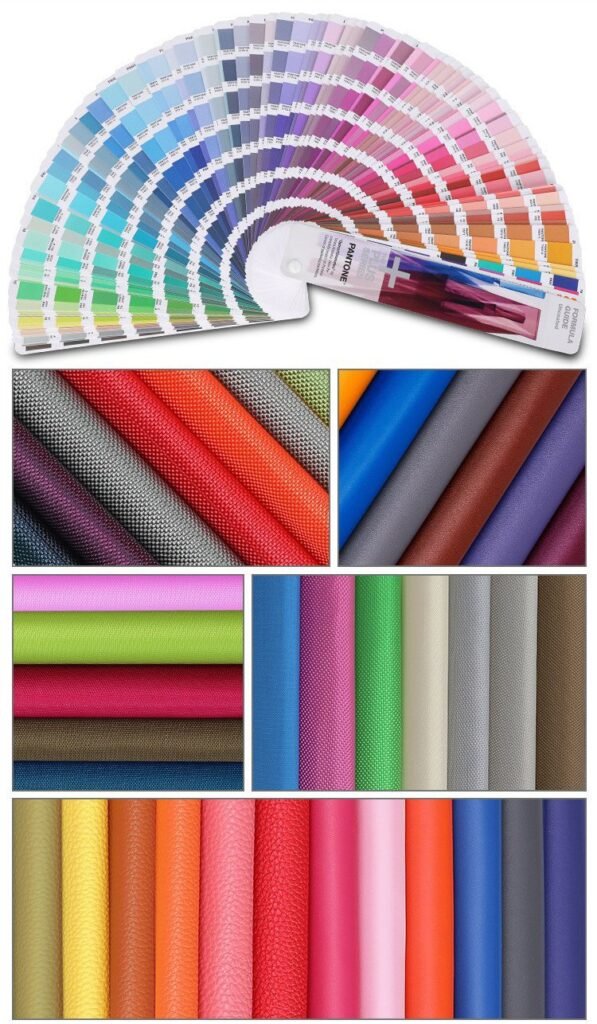
Color Categories:Our fabric color chart is divided into clear categories, making it easy for you to navigate and find your desired hues. Whether you’re searching for bold colors that stand out or subtle tones for a minimalist design, our organized color chart ensures quick selection. These categories cover a full spectrum of options, from bright and eye-catching shades to more muted and elegant tones, perfect for any polyester fabric project.
Color Swatches and Codes:Each category contains multiple swatches that display the available shades within that color family. Next to each swatch, you’ll find the Pantone color code, which ensures consistency and accuracy when placing your order. These Pantone codes serve as an industry standard, guaranteeing that the color you see on our chart is exactly what will be delivered in the fabric. This attention to detail ensures that your products maintain their visual appeal and stay true to your original design.
Custom Color Options:If our extensive standard chart doesn’t perfectly match your needs, we also offer fully customizable fabric colors. Simply provide us with your desired Pantone code or specific color samples, and our team will work with you to develop a fabric color that fits your exact vision. This option is ideal for companies looking for exclusive branding opportunities or designers aiming to create a unique and personal touch.
Digital Rendering Services:To help you visualize how your chosen fabric color will appear on your finished product, we provide digital rendering services. This allows you to preview how the selected color looks in context, whether it’s on a garment, bag, or other textile product. With this tool, you can fine-tune the color choice or make adjustments to other design elements before production begins, ensuring that your custom polyester fabric meets your expectations.
Production Process Of Fabric
At Szoneier factory, the production process of polyester fabric is a blend of advanced technology and meticulous craftsmanship. We begin with the polymerization of raw materials to create polyester fibers, which are then spun into yarn. These yarns undergo weaving or knitting to form the base fabric. To ensure top-tier quality, each stage of production is carefully monitored, from dyeing and finishing to applying special treatments like water resistance or UV protection. Our cutting-edge machinery allows us to produce fabrics in a wide range of textures and finishes, customized to meet the specific needs of your project. With our commitment to precision and excellence, you can count on durable, vibrant, and versatile polyester fabrics ready for any application.
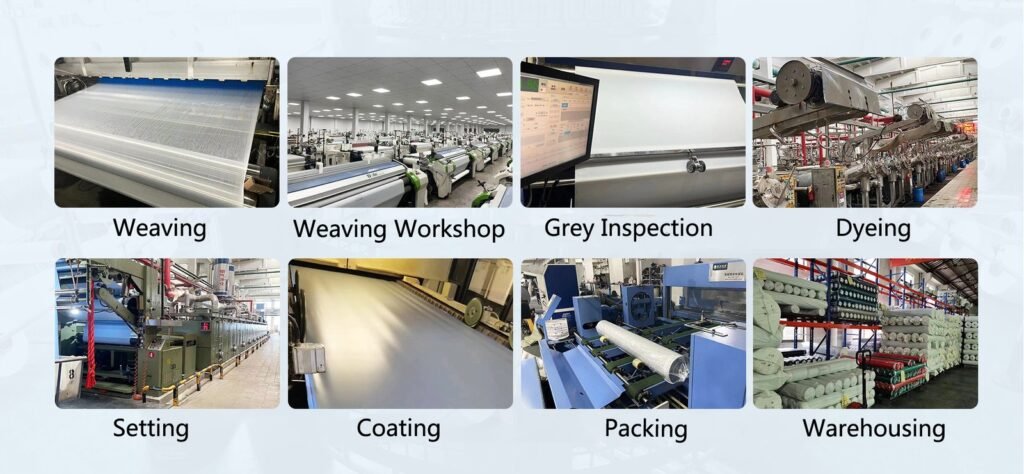
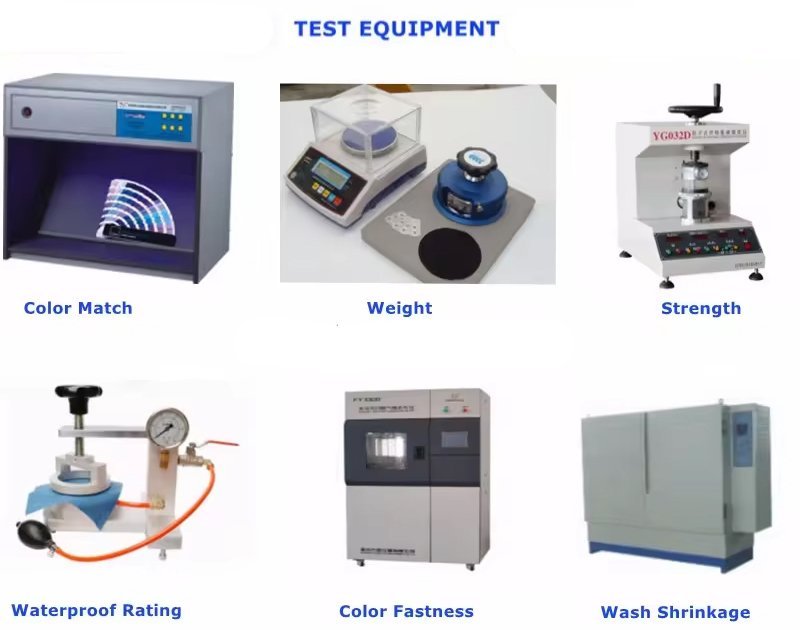
Testing Equipment Of Fabric Production
At Szoneier fabric production factory, we utilize state of the art testing equipment to ensure the highest standards of quality and durability. Our advanced machinery includes tensile strength testers, colorfastness testing equipment, abrasion resistance testers, and moisture control systems. Each piece of fabric undergoes rigorous testing for consistency, performance, and longevity, allowing us to guarantee top-quality products that meet both industry standards and customer expectations. This commitment to quality ensures fabric excellence from production to final delivery.
Make A Sample First?
Got a specific artwork, logo, or design concept in mind? We’re all ears! Share every detail—your preferred fabric type, Pantone colors, and any custom features you want. Our team will partner with you to nail your vision with precision. We’ll start by creating a fabric sample so you can touch, feel, and inspect the quality, texture, and color firsthand before committing to full production. This way, we tweak things until it’s exactly what you imagined. Let’s turn your ideas into a fabric that’s uniquely yours !
Video Of Product And Production
Get a behind the scenes look at our fabric production process with our exclusive factory video. where you can witness the fascinating journey of our polyester fabrics from raw materials to finished products. Our informative videos provide a behind-the-scenes look at the advanced techniques and skilled craftsmanship that define our manufacturing process. Whether you’re interested in the production methods or the innovative designs we offer, these videos reflect our dedication to quality and creativity in fabric development. Join us and explore the artistry of our fabric production!
Cooperating Brands Trusted
Your product is produced in reliable factory like our already cooperating international brand partners below:

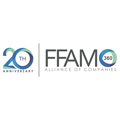

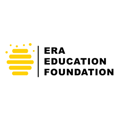

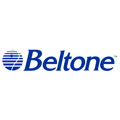


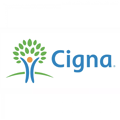


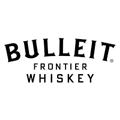
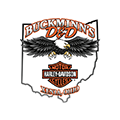





Linen is a natural fabric made from flax fibers, known for its breathability, durability, and eco-friendliness. Compared to cotton, linen fibers are longer, making the fabric stronger and more resistant to wear and tear. It also absorbs moisture faster and dries quickly, making it perfect for warm climates. Additionally, linen has a natural antibacterial property, making it hypoallergenic and ideal for people with sensitive skin. Unlike polyester, which is synthetic and non-biodegradable, linen is entirely natural and decomposes easily, reducing environmental impact. While linen wrinkles more than cotton or polyester, many people appreciate its relaxed, elegant look. Moreover, linen fabric becomes softer with each wash, whereas cotton fibers tend to weaken over time. Because of these benefits, linen is often considered a premium fabric for clothing, bedding, and home textiles, offering both luxury and sustainability.
Linen wrinkles easily because it is made from natural flax fibers, which have low elasticity. Unlike synthetic fabrics that retain their shape, linen is more prone to creasing due to its rigid fiber structure. However, wrinkles in linen are often considered part of its charm, giving it a relaxed, lived-in appearance. To minimize wrinkles, wash linen in cold or lukewarm water and remove it from the washing machine immediately. Shake out the fabric and air dry it on a hanger or flat surface. Ironing linen while slightly damp with a steam iron on medium heat can help smooth out deeper wrinkles. If you prefer a more effortless look, you can also opt for linen blends, which combine flax with cotton or viscose to create a softer and less wrinkle-prone fabric. Proper care will ensure your linen remains fresh and elegant over time.
Linen is a durable fabric, but it requires special care to maintain its beauty and longevity. Wash linen in cold or lukewarm water (30°C or lower) using a mild detergent. Harsh chemicals, such as bleach, should be avoided as they can damage the fibers and weaken the fabric over time. Machine washing on a gentle cycle is generally safe, but linen should be washed separately from heavy fabrics like denim or towels to prevent abrasion. When drying linen, air drying is the best option. Hang it up or lay it flat to dry naturally, as tumble drying on high heat can cause shrinkage and weaken the fibers. If you must use a dryer, choose a low-heat setting and remove the fabric while slightly damp to minimize wrinkles. With proper washing and drying techniques, linen becomes softer and more comfortable with each use.
Yes, linen is considered one of the most sustainable fabrics available. It is made from flax, a plant that requires minimal water, pesticides, and fertilizers to grow, making it much more eco-friendly than cotton. Additionally, almost every part of the flax plant is used in various industries, minimizing waste. Linen fabric is also biodegradable and compostable, meaning it will naturally break down without causing pollution. The production process for linen uses fewer chemicals compared to synthetic fabrics, which release microplastics into the environment. Many linen manufacturers now follow ethical and eco-friendly practices, such as organic farming and water-saving dyeing techniques. Choosing linen over synthetic fabrics helps reduce environmental impact while supporting sustainable fashion and home textiles.
Linen can shrink slightly after the first wash, particularly if it is exposed to high heat. Most linen fabrics are pre-washed during manufacturing to reduce shrinkage, but it’s still important to take precautions. To prevent excessive shrinkage, wash linen in cold or lukewarm water and avoid hot water, which can cause the fibers to contract. Air drying linen instead of tumble drying is the best way to maintain its original size. If using a dryer, select a low-heat setting and remove the fabric while slightly damp. Another tip is to gently stretch the linen fabric back to its original shape while it is still damp before letting it dry completely. By following these steps, you can ensure your linen stays soft, breathable, and retains its natural beauty for years.
Linen is a versatile, stylish, and eco-friendly fabric that requires minimal but careful maintenance. With the right care, it will not only last a long time but also improve in texture and comfort over time, making it a worthwhile investment for clothing and home décor.
Frequently Asked Questions
Welcome to our FAQ section on customized nylon fabrics, where we answer your most common questions and provide insights into fabric types, customization options, features, and order-related details. Whether you’re looking to learn more about the various nylon fabric styles, specialized finishes, or the ordering process, we’re here to help. Our goal is to ensure that you have all the information needed to make informed decisions about selecting the perfect nylon fabric for your unique project.

